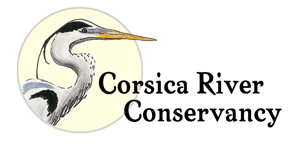Underwater grasses, or SAVs, have been in the news lately as the annual observations of their spread and health has recently been released. The results show the third consecutive year of overall decline. (See https://news.maryland.gov/dnr/2021/07/28/lingering-impacts-from-extreme-weather-events-affect-chesapeake-bay-underwater-grasses-in-2020/) However, several areas actually saw an increase in grasses relative to restoration goals. These include the middle Chester River at 287%; and the tidal fresh portion of the Chester River at 16,554% (the percentage of the goal attained is so high due to a very small segment restoration goal).
Underwater grasses are a critically important bay habitat that provide multiple ecosystem benefits. They remove nutrients and sediment from the water column, reduce shoreline erosion, provide habitat and protection for blue crab and largemouth bass, and support and sustain migrating waterfowl. A recent study has also shown that underwater grasses in the Chesapeake Bay help reduce acidification associated with climate change, which benefits crabs, oysters, clams, and scallops.The loss of mid-Bay grasses could have been a contributing factor to a fewer juvenile crabs, which rely heavily on underwater grass beds for habitat and protection from predation.
Corsica River Conservancy volunteers are working with ShoreRivers to monitor SAVs this summer. For more information about the monitoring program and to volunteer visit www.shorerivers.org or contact CRC at corsicariverconservancy@gmail.com.
